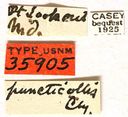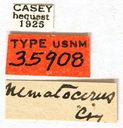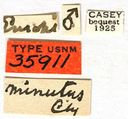Hylotrupes
Hylotrupes
Classification
- Phylum: Arthropoda
- Subphylum: Hexapoda
- Class: Insecta
- Order: Coleoptera
- Suborder: Polyphaga
- Superfamily: Chrysomeloidea
- Family: Cerambycidae
- Subfamily: Cerambycinae
- Tribe: Hylotrupini
- Genus: Hylotrupes
Pronunciation
How to pronounce Hylotrupes: /ˌhaɪloʊˈtruːpiːz/
These audio files are automatically generated. While they are not always 100% accurate, they are a good starting point.
Images






Summary
Hylotrupes is a monotypic genus of woodboring beetles in the family Cerambycidae. The sole species, Hylotrupes bajulus, is known for its wood-boring larvae that can damage structures, particularly in new construction.
Physical Characteristics
Hylotrupes bajulus can reach a body length of about 8–20 mm (0.31–0.79 in), while mature larvae can reach 30 mm (1.2 in). They are brown to black, appearing grey due to a fine grey furriness. Two conspicuously hairless tubercles are present on the pronotum, and elytra typically feature two whitish pubescent spots. Small specimens may lose the elytra spots and have reddish legs and antennae.
Identification Tips
Look for the two hairless tubercles on the pronotum and the characteristic oval exit holes (6–10 mm in diameter) left by adults.
Habitat
Prefers freshly produced sapwood of softwood timber, particularly dead wood of pines, fir, and spruce.
Distribution
Originally from Europe, now has a cosmopolitan distribution including Southern Africa, Asia, the Americas, Australia, and much of Europe and the Mediterranean.
Diet
Only larvae feed on wood, with preference for softwood such as pine and spruce.
Life Cycle
The life cycle from egg to beetle typically takes two to ten years, depending on wood type, age, quality, and environmental conditions. Larvae pupate just beneath the wood surface and emerge in mid to late summer.
Reproduction
Females do not have a real ovipositor, only an elongated telson.
Ecosystem Role
Ecologically important as a scavenger of dead pine trees and related timber, hastening their decay and collapse.
Economic Impact
Infection of home construction can be caused by infested wood, particularly if not properly kiln-dried.
Cultural Significance
Known by several common names such as house longhorn beetle, old house borer, and European house borer.
Evolution
This genus is monotypic, with Hylotrupes bajulus being the only species.
Misconceptions
Contrary to its name, the old-house borer is more often found in new houses due to its attraction to the higher resin content of recently harvested wood.
Tags
- cerambycidae
- woodboring beetles
- Hylotrupes bajulus
- old house borer
- global distribution